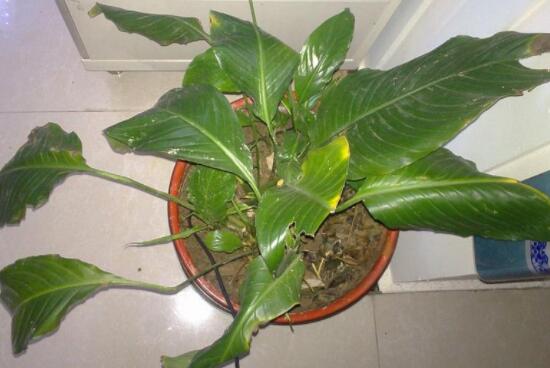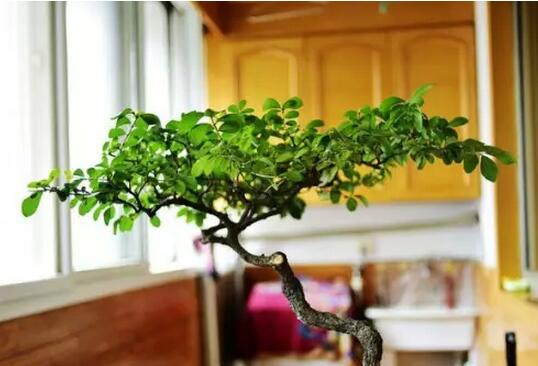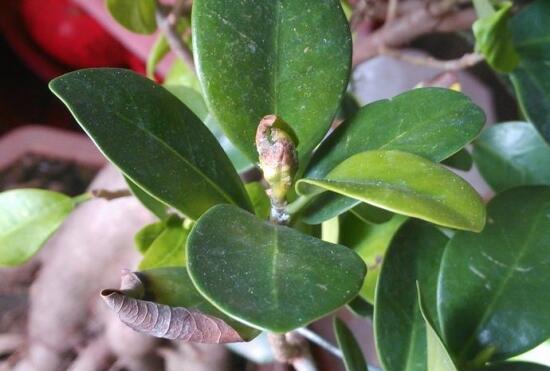What if the leaves of the white crane taro turn yellow. 6 causes and solutions / pay attention to light, water and fertilizer
White crane taro, also known as plain sailing, is a beautiful and ornamental flower, deeply loved by flower friends. In daily life, there are many people who raise white taro, but in the process of breeding, many flower friends' plants will appear yellow leaves. So, what if the leaves of the white crane taro turn yellow? In this regard, the editor summed up 6 causes, let's go and have a look!
First, the white crane taro leaves turn yellow, look for the cause

As a common flower, the culture method of white crane taro is not difficult, but there are many novice, many of them do not know how to raise, in the light, water and fertilizer do not know the depth, the result is slightly different, the plant will appear the symptom of leaf yellow. As for the white crane taro leaves yellow how to do, we first have the cause, and then for the solution, the specific we go on to look at.
Second, the causes of yellowing of white crane taro leaves and its solutions.
1. Improper lighting
When it comes to the cause of yellowing of white crane taro leaves, the most common reason is improper lighting. White crane taro likes light, but it avoids strong light, once it is directly exposed to the sun, the plant will be uncomfortable due to rapid changes in the environment, resulting in leaf yellow symptoms.
Solution: in summer, to avoid strong light exposure, once the exposure leads to leaves yellowing, quickly take the basin to the shade, and then water, careful maintenance for two days can be solved.
2. Temperature discomfort
In addition to light, the low or high growth temperature is also one of the main reasons for the yellowing of taro leaves. It is understood that the best growth temperature of white crane taro is 22-28 ℃. Once the temperature is lower than 5 ℃ or higher than 35 ℃, the plant is prone to yellow leaves.
Solution: when the temperature is low, set the room temperature to more than 15 ℃; when the temperature is high, do the temperature treatment, and timely watering to accelerate the cooling.
3. Overwatering
White crane taro likes a humid environment, but it avoids stagnant water. once it is watered too much, it will affect the respiration of plant roots. On the other hand, the root of the white crane taro does not breathe smoothly, which leads to root rot, yellow and black leaves.
Solution: take the white crane taro to the ventilated place to blow, wait for the basin soil to dry and take it back to the room for careful maintenance, and then water it normally. Specifically achieve: water every 2-3 days in summer and every other week in winter. Each time you can't just water the skin, you should water it thoroughly at once.
4. Improper fertilization
After watering, let's talk about fertilization. it is also one of the reasons why the leaves of Amorphophallus are yellowed. White crane taro likes fertilizer and needs sufficient nutrients in the process of growth, but once it is fertilized too much, it will be counterproductive, its leaves will be yellow and wrinkled, and in serious cases, it will cause rotten roots and even death.
Solution: timely irrigation to dilute fertilizer and flow out from the bottom of the basin; in addition, fertilization is not difficult. In the growing season of young plants, flower friends apply 10 times of rotten liquid fertilizer every 15 days and compound fertilizer every 30 days to achieve this top. the yellowing of white crane taro leaves will be solved.
5. The basin has not been changed for a long time
The reason why the leaves of the white crane taro turn yellow may also be that you haven't changed the pot since you bought the flowers. Because white crane taro in the early stage of growth, nutrition is absorbed from the soil, for a long time, the soil nutrition will be reduced, resulting in malnutrition, leaves yellowing is very common.
Solution: if it is a basin soil problem, it is very simple to solve, just change the basin soil directly. Dump the old soil and replace it with loose, moist, aerated soil.
6. Occurrence of insect pests
In addition to the above, the yellowing of white crane taro leaves may also be known by insect pests. It is understood that if there are mites pests harm, the leaves of the white taro show wilting, gloss desalination, yellow wilt and other adverse symptoms.
Solution: special mites can be sprayed for control, specific agents can refer to the disease and insect pest control of taro.
As a novice, when many people first bought the white crane taro, its leaves were still very green, but after a period of time, the leaves began to turn yellow, in fact, you failed to achieve the position. As long as we follow the above requirements, it is not a thing for the leaves to turn yellow. With regard to the yellowing of the leaves of the white crane taro, the editor has introduced it here, hoping to bring help to everyone.
White crane taro leaves wilted how to do, appropriate shade / reasonable water and fertilizer / diseases and insect pests spray
For white crane taro, flower friends should be no stranger, it is also called white palm, plain sailing, is a kind of flower loved by flower friends. In life, there are many people who keep white crane taro at home, but in the process of breeding, because of various reasons, plant leaves will wilt symptoms, then white crane taro leaves wilted how to do? Today, the editor is here to solve this problem for everyone.
First, the white crane taro leaves wilted, looking for the cause
As a common flower, the culture method of white crane taro is not difficult, but the flower friends are easy to neglect in some details, and the result is shown on the leaves, resulting in symptoms such as yellowing and wilting of white crane taro leaves. As for what to do when the white crane taro leaves wilted, the editor summarized six causes and attached solutions, and we moved on.
Second, the causes of wilting leaves of Amorphophallus and its solutions.
1. The light is too strong
White crane taro likes light, but it is afraid of strong light, so it has the best curing effect in indoor astigmatism. If in summer, people put the white crane taro in the sun, it will have an uncomfortable reaction, mainly manifested as white crane taro leaves wilting and yellow.
Solution: if the exposure time is not long, move it to the indoor shade in time to slow it down, pour a little water, and then slowly move the plant to the astigmatism for maintenance; if the exposure time is long, the plant may not be saved, so summer maintenance must pay attention to shade.
2. Temperature discomfort
Amorphophallus likes warm environment, and the most suitable growth temperature is 22-28 ℃. Once the temperature is more than 35 ℃ or lower than 5 ℃, it is easy to wilt the leaves.
Solution: in summer, plant should be moved to indoor ventilated place for maintenance, and timely watering to cool down; in winter, room temperature should be kept above 15 ℃.
3. The air is too dry
White crane taro likes a humid environment, which requires high air humidity. If the air is too dry, it will make the leaves of white crane taro wilting and unenergetic.
Solution: in the process of white crane taro growth, in addition to meeting its water requirements, water should be sprayed around the plant from time to time to increase air humidity.
4. Excessive fertilization
White crane taro likes to be fat, and sufficient nutrients can make it bloom more beautifully in the process of growth. However, we must pay attention to fertilization, fertilization can not be too much or too thick, otherwise it will produce fertilizer damage, so that the poor growth of white crane taro, the phenomenon of leaf wilting.
Solution: if the white crane taro leaves wilted caused by too much fertilization, we should irrigate in time to dilute the fertilizer and let them flow out from the bottom of the basin.
5. Diseases and insect pests
When it comes to the reason why the leaves of the white crane taro have wilted, in fact, diseases and insect pests are also a point that we need to consider. It is understood that, for example, when there are mites, the leaves of the white crane taro wilt, lose their luster and become yellow.
Solution: find out what kind of diseases and insect pests are specific, and then solve the problem by spraying. Specifically, you can refer to the pest control of white crane taro.
6. Environmental abrupt change
In addition to the above points, environmental mutation is also one of the reasons for the wilting of white crane taro leaves, which generally occurs on newly bought white crane taro potted plants. The reason for this is that the environment has changed, and the temperature and humidity have changed greatly, which can easily lead to the weakening of root absorption function and the decrease of water absorption.
Solution: at this time, we do not have to worry, this is a new pot must go through the process. Flower friends only need to meet its growth needs, and it will return to health after a period of time.
What measures should be taken after smooth sailing and yellowing leaves?
Content Abstract: plain sailing, the scientific name is white crane taro, recorded in the "Araceae", for angiosperms, aliases as bract taro, white palm, lily intention, etc., planting is more complex, what measures should be taken after smooth sailing leaves yellowing? [plain sailing leaves yellowing]
Cause of yellowing
Waterlogging: smooth sailing for temperate plants, daily excessive watering, resulting in stagnant water in the basin, leaves will appear yellowing phenomenon, at this time diseased and tender leaves, more than a year old leaves have no obvious change, while new branches and leaves, first atrophy, then yellow, and eventually wither, will also affect the whole plant.
Drought: the leaves yellowed due to lack of water, mostly showed that the edge of the leaves withered and dried, but mostly affected the old leaves, began to wither and yellowed from the bottom up, and the new leaves did not change in a short time.
Burns: sufficient light absorption, maintenance time under the scorching sun for too long, will also cause yellow leaf phenomenon, because smooth sailing for shade plants, and too much light, it will be because of its flowers, occupation withered, dry, the first performance of the leaf macula, can be transferred, but also contagious. But at the same time, due to the lack of daily light, it will also cause the leaves to turn yellow now, mostly for the whole plant leaves turn yellow, and then fall off.
Fat and strong: the reason for the yellowing of this kind of leaves is mostly because the daily pruning is not in place, resulting in branches and leaves too dense, while the root system and rhizome center do not get enough nutrients in time, and the leaves are lack of green, resulting in yellowing and shedding.
Undernutrition: lack of nutrition, mostly because of daily water and fertilizer reasons, due to lack of fertilizer will be shown as the new leaf color lighter, no freshness, the color will also change from green to yellow.
Disease and insect injury: smooth sailing and planting, the most common disease is leaf spot disease, and leaf yellowing is caused by disease pests, anthrax, brown spot and so on, mostly because of inducing the parasitism of scale insects, after absorbing smooth flowers and leaves, the virus is transmitted, and after the leaves turn yellow, most of them die. Solution method
1. After the leaves turn yellow, we should first observe whether the rotten roots have appeared, while those with serious illness need to change the soil and basin, because after the rotten roots appear, the soil can no longer provide nutrients, and the roots are difficult to breathe, but after changing the soil, it is necessary to avoid direct sunlight, and the soil should be kept loose.
two。 The cause of plant yellowing can be judged. If the growth is too dense, the ramet method can be adopted directly, which can not only improve the yellowing phenomenon, but also achieve the purpose of reproduction.
3. However, the yellowing of plants is too serious, which is caused by infectious diseases, so it is suggested that they should be discarded. This phenomenon is difficult to improve even if the soil and pots are changed.
4. Smooth sailing leaves turn yellow, because the environment is too dry, you can use foliar watering to water the roots in a short time, or you can wrap the yellowing leaves in plastic bags, but when the climate is right, you need to open them for plants to breathe. In this way, because of the internal temperature and height after the package, it has a certain inhibitory effect on foliar disease.
5. If the yellowing phenomenon occurs at the leaf tip due to the lack of soil nutrition, the soil can be changed, and nutrient elements can be applied to the soil to reconcile the acidity and basicity of the soil. After the plant nutrition is absorbed, the yellowing phenomenon can be avoided.
6. The yellowing phenomenon of leaves caused by too much light should be found in time, and it should be moisturized, transported indoors, or directly protect the leaves from the hot sun. However, if it is still placed in the hot sun for a long time, the yellowing of leaves will be aggravated, resulting in death.
7. Timely improve maintenance details, such as fertilization, avoid contact with agricultural fertilizer, raw fertilizer and so on, and after applying solid fertilizer, water should be irrigated in time, and fertilizer can also be diluted and irrigated, which is not only conducive to absorption. it can also improve the yellowing of smooth sailing leaves caused by improper fertilization.
8. Yellow leaves caused by scale insects often appear yellow spots on smooth sailing leaves. At this time, you can choose to use carbendazim, which can be diluted directly and sprayed with appropriate amount, which can help remove diseases and pests and play a preventive role. Prevention method
1. During daily maintenance, scientific application of water and fertilizer should be adopted to avoid plant pathological changes due to excessive and insufficient water and fertilizer. at the same time, smooth sailing is suitable for mild light, strong sense of light, and easy to form burns.
two。 From May to September every year, plain sailing plants will turn yellow because the environment is too dry, so it is necessary to keep the soil moist and spray water on the surface to avoid deep watering, while fertilization should be kept twice a month until November. It is necessary to move the plants indoors to avoid going out for the winter.
3. Learning the correct method of plain sailing cultivation and paying attention to daily details can avoid the phenomenon of pathological changes, death and yellowing of leaves due to incorrect maintenance.
Summary: smooth sailing leaves yellowing reasons, solutions, and prevention methods are introduced as above, we should pay attention to the daily planting environment, secondly, pay more attention to planting skills, more conducive to growth.
[more information] Camellia oleifera planting Phoenix tail bamboo pictures pictures of Eucalyptus the harm of Eucalyptus what is the price of Bauhinia trees
- Prev

How to raise Ligustrum lucidum, Ligustrum lucidum cultivation methods and precautions/sufficient light
Ligustrum microphylla is a small shrub belonging to Ligustrum genus of Oleaceae. It can be seen in many parts of our country, but there are many places to pay attention to if you want to raise it well. How to raise small privet? What are the breeding methods and precautions of Ligustrum lucidum? The following small series takes everyone to understand
- Next

How to do the yellowing of banyan leaves? six causes and solutions / improper water and fertilizer is the key.
The banyan tree, a beautiful plant, is often made into bonsai and raised at home. The beauty of the banyan tree lies in its strong roots and its leafy upper body, so when its leaves turn yellow and affect its beauty, flower friends must be in a hurry! What if the leaves of the banyan tree turn yellow?
Related
- Fuxing push coffee new agricultural production and marketing class: lack of small-scale processing plants
- Jujube rice field leisure farm deep ploughing Yilan for five years to create a space for organic food and play
- Nongyu Farm-A trial of organic papaya for brave women with advanced technology
- Four points for attention in the prevention and control of diseases and insect pests of edible fungi
- How to add nutrient solution to Edible Fungi
- Is there any good way to control edible fungus mites?
- Open Inoculation Technology of Edible Fungi
- Is there any clever way to use fertilizer for edible fungus in winter?
- What agents are used to kill the pathogens of edible fungi in the mushroom shed?
- Rapid drying of Edible Fungi

